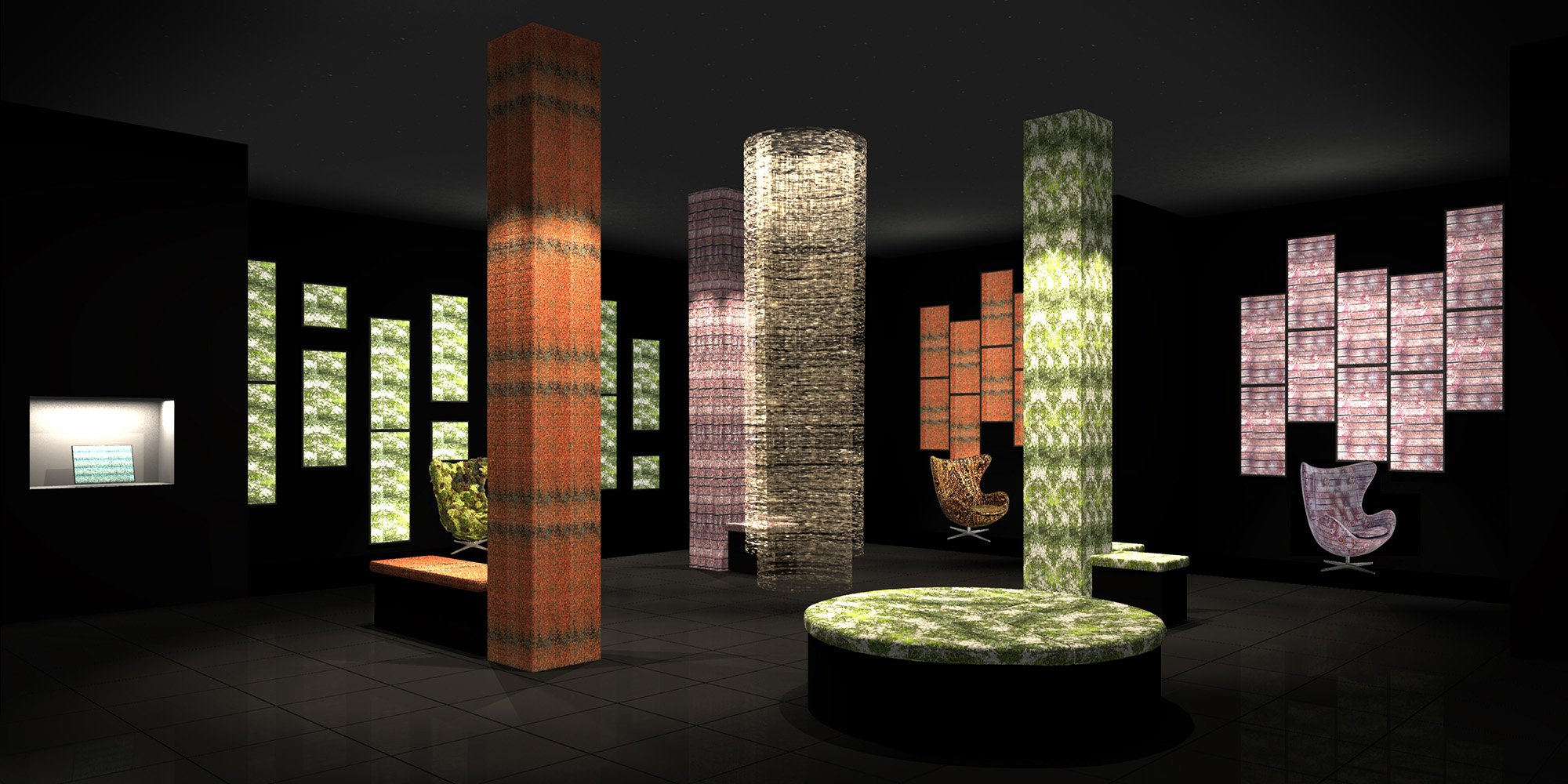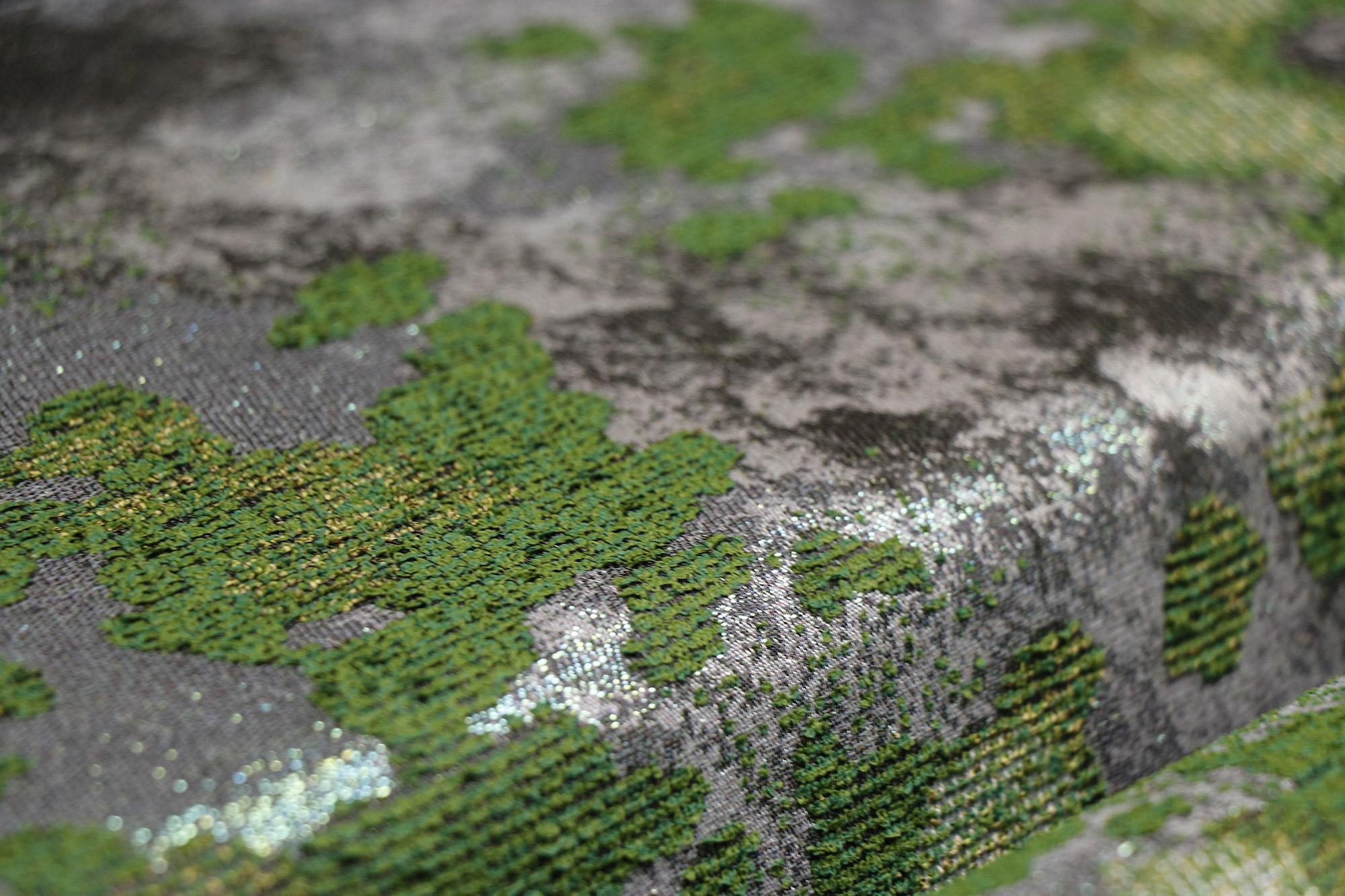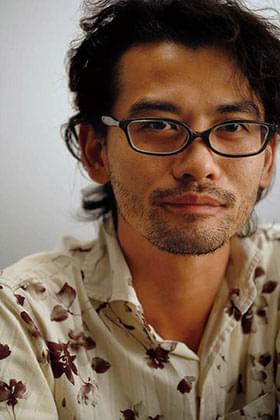Milan Design Week 2023 Evolutionary Specimen of fabrics
Exhibition “Evolutionary Specimen of fabrics” to showcase light manipulating textiles
Venue:Superstudio Più Date: April 18 – April 23, 2023
Kawashima Selkon Textiles (Headquarters: Sakyo-ku, Kyoto; President: Akira Mitsuoka) will showcase its innovative textiles and designs at the upcoming Milan Design Week in Milan, Italy from April 18 (Tue) – April 23 (Sun), 2023.

The upcoming exhibition, which marks its third appearance at Milan Design Week, centers around the theme of “Evolutionary Specimen.” Since its establishment, Kawashima Selkon Textiles has consistently sought to expand the possibilities of weaving through the inheritance and evolution of traditional weaving techniques. This exhibition, with art direction by lighting designer Izumi Okayasu, successfully replicates and extends expressions that were once only achievable through traditional techniques, by using modern machinery. This can be considered an “evolution of fabrics,” and will be presented through a specimen-like display, allowing visitors to carefully examine every detail of the weaving techniques, materials, and threads involved.
The fabrics showcased in the exhibition are ones in which Kawashima Selkon Textiles are uniquely skilled at creating, with the remarkable ability to “manipulate light.” Through the evolution of traditional techniques combined with modern technology, these fabrics evoke different expressions depending on the angle of view and the way light interacts with the fabric. The design was inspired by the fabrics produced as upholstery for Fritz Hansen’s iconic Egg™ chair during the “Weaver’s Quest” exhibition held in Tokyo in 2019 and 2020. The upcoming exhibition will showcase the overseas debut of these fabrics produced with renowned fashion designers such as Mihara Yasuhiro, Rok Hwang, and Masayuki Ino as the design inspiration source, along with the evolved light manipulating textiles using modern technology, providing visitors with the opportunity to appreciate the contrast between traditional and contemporary techniques.
Kawashima Selkon Textiles is a Nishijin-ori manufacturer with roots in the Kyoto Nishijin textile industry. By merging traditional Nishjin techniques with modern technology, and continuously improving their techniques, materials, and designs, Kawashima Selkon Textiles has expanded its production to include a wide range of products including theater carpets and upholstery, kimono obi, curtains and wallpapers for luxury hotels, dress fabrics for fashion weeks, as well as the reproduction of fabrics designated as national treasures. Witness the evolution of Nishijin-ori and the dynamic interplay of fabric and light by visiting the exhibition.
Installation : Evolutionary Specimen
Specimen (ˈspɛsɪmɪn) :
- An individual element taken from a population for statistical inference. Also referred to as “sample,” in contrast to the original “population”.
- A sample that has been collected, processed and preserved for research or educational purposes in fields such as biology, medicine, and mineralogy.
- A “sample” or “model” that represents an archetype, often used metaphorically.
The legacy of traditional weaving techniques is entrusted to the hands of its craftspeople. In order to truly preserve these techniques, Kawashima Selkon Textiles believes it is essential to pass them down from one generation to the next, while also incorporating modern technologies and continuing to develop the traditional techniques themselves. This dedication has resulted in a range of fabrics that enable expressions that have evolved from the past and can be considered entirely new forms of weaving that transcend the realm of design.
The installation is centered around the theme of “Specimen,” in the hope that the evolving forms of textiles and the techniques, designs, materials, and other details that constitute them, including the yarn twist and weave structures, will be passed down to future generations. By carefully and repeatedly observing the fabrics exhibited, detailed aspects of its weave structures and yarn properties that are not easily seen at first glance can be discovered. Visitors are invited to observe the “evolution of fabric” that emerges brightly in the darkness, and uncover the greatest developments hidden within even the smallest details.
New Fabrics Moss and Rust as Motifs
“Rust”, imbued with a depth that can only be found in aged items, and “moss,” which embodies a sense of vitality amidst decay, make up the motifs of the fabrics. Various threads and weaving techniques were used to emphasize the rough textures and color variations that occur as “rust” develops, as well as the subtle coloring and fluffiness that “moss” presents. Together, they evoke a Japanese aesthetic sense and create a three-dimensional effect and quality unique to weaving.
Special emphasis was also made on the threads used for the fabrics, including the use of foil threads and twisted design threads. Foil threads refer to threads made from thinly sliced paper with gold or platinum foil and thinly sliced shells adhered to it, and are now produced through various methods. Drawing inspiration from the traditional Nishijin weaving technique of “hikihaku”, the foil threads were woven as warp threads, and modern techniques were applied to bring out a fresh allure. Twisted design threads refer to threads created by twisting together threads of various shapes, colors, and thicknesses, and offer infinite possibilities in their expressions. For this exhibition, twisted design threads that combine foil threads with yarns of different colors were used, and produced in-house by Kawashima Selkon Textiles.

Art Director : Izumi Okayasu
[MESSAGE]
”The fabrics presented in this exhibition are a new generation of textiles that have evolved through merging modern technology with traditional techniques. They reflect not new or minor changes, but an evolution. For the display, the aim was to present the textiles in an orderly and detailed manner, as if they were specimens in a collection. The inheritance of tradition is made possible by evolving with the times while also maintaining the core of its tradition. We would like to introduce these fabrics as an “inheritance of tradition” that is only possible for a company with a long history, instead of simply presenting a “new interpretation” of the past.
[PROFILE]
Lighting Designer / Born in 1972 in Kanagawa, Japan
Izumi Okayasu Lighting Design President
Izumi Okayasu is a versatile designer who specializes in lighting design, with a portfolio that ranges from architectural and commercial lighting design to lighting equipment and installation design, both domestically and internationally. His past projects include lighting design for Jun Aoki’s “White Chapel,” Toyo Ito’s “Toyo Ito: Generative Order,” Kengo Kuma’s “Asakusa Cultural Tourism Center,” and Riken Yamamoto’s “Namics Techno Core.” Additionally, he has designed numerous installations for exhibitions, including Milan Design Week.

Event Overview
| Title | Evolutionary Specimen of fabrics |
| Date | April 18th (Tue) – April 23th (Sun),2023 11:00 – 21:00 * Last day until 6:00 p.m. |
| Venue | Superstudio Più Web : https://www.superstudioevents.com/ Address : Via Tortona, 2720144 Milano MAP |
| Exhibition Area | Approx. 126㎡ |
| Art Direction | Izumi Okayasu (Izumi Okayasu Lighting Design) |
| Event Site | https://www.kawashimaselkon.co.jp/event/milan2023/en/ |
Kawashima Selkon Textiles
Established in Kyoto in 1843, Kawashima Selkon Textiles celebrates its 180th anniversary this year. The company’s fabrics have been highly praised for their quality, having supplied textiles to the Meiji Palace in the past, and to the Kyoto State Guest House as well as numerous luxury hotels in recent years. Kawashima Selkon Textiles combines traditional hand-weaving techniques with modern technology such as machine-weaving, and is committed to the inheritance of cultural heritage and technological innovation that connects to the future. In 2019, the “Weaver’s Quest” was launched to challenge the “impossible” and kickstart the pursuit for new expressions and possibilities, aiming for the evolution and development of textiles. The company’s headquarters in Kyoto also houses a textile manufacturing plant that offers integrated production services, from planning and design to dyeing and weaving, the Kawashima Textile Museum, which preserves works of significant historical importance, and the Kawashima Textile School, where traditional weaving techniques are taught to the next generation. Kawashima Selkon Textiles strives to serve as a hub for the inheritance, development, and promotion of textile culture.
